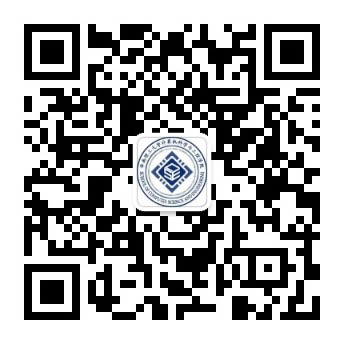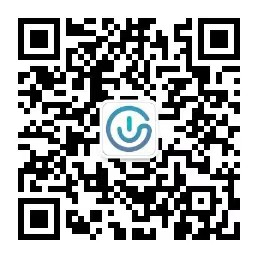《数字逻辑》教学大纲
“Digital Logic” Syllabus
课程代码 | 045101212 |
课程名称 | 数字逻辑 |
英文名称 | Digital Logic |
课程类别 | 专业基础课 |
课程性质 | 必修 |
学时 | 总学时:32 实验:8 |
学分 | 2 |
开课学期 | 第三学期 |
开课单位 | 计算机科学与工程学院 |
适用专业 | 计算机科学与技术全英联合班、全英创新班 |
授课语言 | 英文授课 |
先修课程 | 电路与电子技术 |
毕业要求(专业培养能力) | 本课程对学生达到毕业要求有如下贡献: №1.2能够应用计算机工程基础和专业知识解释模型的数理含义,对模型进行正确的推理,对专业工程问题进行专业分析; №3.1 能够设计满足计算机复杂工程特定需求和功能的系统、单元(部件)或计算机系统研发的全生命周期过程; |
课程培养学生的能力(教学目标) | 《数字逻辑》实验的教学目标是让学生掌握组合逻辑电路和时序逻辑电路的分析和设计方法,理解设计性实验和综合性实验的原理及实验方案,掌握正确操作规程,学会使用常用的标准集成电路,了解其性能参数、适应范围及注意事项,掌握实际电路的调试技巧和测试方法。 |
课程简介 | 本课程是计算机科学与技术专业的一门技术基础课,是计算机硬件领域几门主干课程的第一门课,主要讲授组合逻辑、时序逻辑、可编程逻辑器件和硬件描述语言,为学习计算机硬件系统设计打下基础。 |
主要仪器设备与软件 | TDS-4数字系统综合实验平台 |
实验报告 | 每次实验均需提交实验报告,包括实验目的、实验原理、实验步骤、实验记录、结论。 |
考核方式 | 实验考核由“预习、考勤、实验纪律、操作、实验报告”五部分组成,所占比例为3:1:1:3:2,“预习”重点检查学生的设计方案和实验步骤;“操作”检查学生的调试能力和实验结果;“实验报告”检查学生撰写实验文档的规范性与完整性。 各个实验的考核总评结果即为实验考核结果。 |
教材、实验指导书及教学参考书目 | (一)实验指导书与参考书 1. 冼进,曹汇坚,池品优. 数字逻辑设计及实验. 2007.5 2. 清华大学科教仪器厂. 数字电路实验范例. 2003.11 (二)多媒体教学资源 俞鹤伟. 数字逻辑实验讲义(ppt课件) |
制定人及发布时间 | 俞鹤伟,2019年5月6日 |
《数字逻辑》实验教学内容与学时分配
实验项目编号 | 实验项目名称 | 实验学时 | 实验内容提要 | 实验类型 | 实验要求 | 每组人数 | 主要仪器设备与软件 |
1 | 交通信号灯 | 4 | 使用D触发器和计数器对红、黄、绿三色交通灯进行控制。 | 综合性 | 必做 | 2 | TDS-4数字系统综合实验平台 74LS74 1片 74LS161 1片 74LS04 1片 |
2 | 流水灯设计 | 4 | 利用分频器、计数器、寄存器和与非门设计一个序列信号发生电路,循环点亮实验台上的小指示灯,能够自启动。 | 设计性 | 必做 | 2 | TDS-4数字系统综合实验平台 74LS161 1片 74LS194 2片 74LS04 1片 74LS08 2片 |
“Digital Logic” Syllabus
Course Code | 045101212 |
Course Title | Digital Logic |
Course Category | Specialty Basic Courses |
Course Nature | Compulsory Course |
Class Hours | Total: 32 Lab Hours: 8 |
Credits | 2 |
Semester | 3rd |
Institute | School of Computer Science and Engineering |
Program Oriented | Computer Science and Technology Full English Creative Class |
Teaching Language | English |
Prerequisites | Electric Circuit and Electronics |
Student Outcomes (Special Training Ability) |
|
Teaching Objectives | The teaching Objectives of the lab are making the students know the way of analysis and synthesis of combinational and sequential circuit, understand the principle and practice plan of compositive and designed experiments, study how to use the common standard ICs, know the parameters and attention, understand the adjustment and testing method of real circuit. |
Course Description | This is a basic technical course for computer science and technology engineering. It is the first course of computer hardware courses series. It mainly includes combinational circuit, sequential circuit, programmable logic device and Hardware Description Language. |
Instruments and Equipments | TDS-4 Digital Circuit Practice Platform |
Experiment Report | Experiment report should be submitted after each lab, including the experiment purpose, principle, steps, record and conclusion. |
Assessment | Examination of experiment includes preparation, attendance, discipline, operation and report. They are composed by 3:1:1:3:2 respectively. Preparation is about the experiment plan and steps. Operation is about the adjustment ability. Report is about the document ability. The combination of every part is the final result of experiment. |
Teaching Materials and Reference Books | (1) Textbook and Reference Books for Lab 1) Jing Xian, Huijian Cao, Pingyou Chi. Design of Digital Logic and Experiments. May.2007 2) Science and Education Instrument Company of Tsinghua University. Samples of Digital Logical Circuit Lab. Nov.2003 (2) Multimedia Teaching Resources Hewei Yu. Experiments of Digital Logical Circuit(ppt) |
Prepared by Whom and When | Hewei Yu, May 6, 2019 |
“Digital Logic” Experimental Teaching Arrangements
No. | Experiment Item | Class Hours | Content Summary | Category | Requirements | Number of StudentsEach Group | Instruments, Equipments and Software |
1 | Traffic lights | 4 | Control the traffic lights with D Trigger and Counter. | Comprehensive | Compulsory | 2 | TDS-4 Digital Circuit Practice Platform 74LS74 1 74LS161 1 74LS04 1 |
2 | Running lights | 4 | Design a generator of sequence signal with Frequency Demultiplier, Counter, Register and NOT-AND gates. | Design | Compulsory | 2 | TDS-4 Digital Circuit Practice Platform 74LS161 1 74LS194 2 74LS04 1 74LS08 2 |



